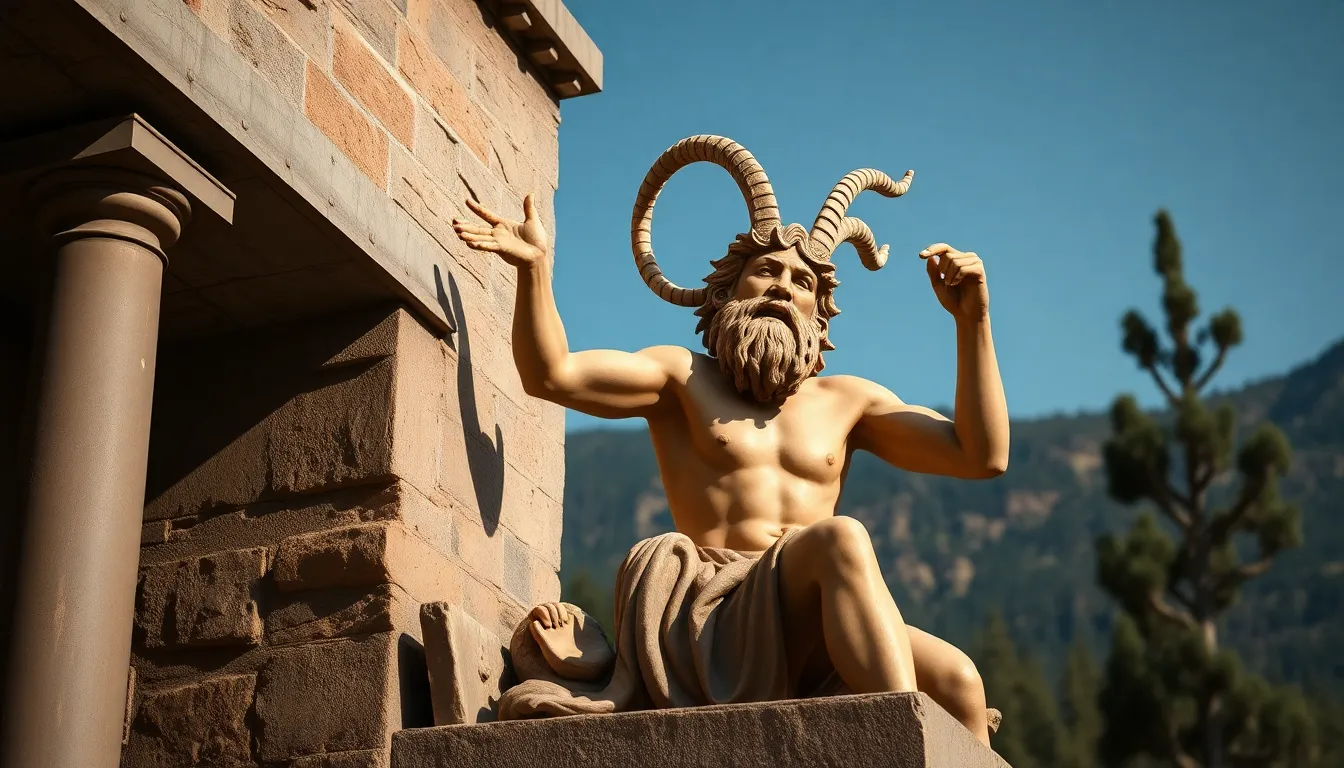The Satyr’s Role in Greek Comedy: Humor and Satire in Ancient Plays
I. Introduction
Satyr plays were a unique form of ancient Greek theatre that combined elements of tragedy and comedy. Defined by their humorous content and often irreverent tone, these plays featured satyr characters—half-man, half-goat figures who embodied the wild and carefree spirit of nature. The significance of satyr plays lies in their ability to provide comic relief amidst the serious themes often presented in tragedies. This article explores how satyrs contributed to the comedic elements within ancient Greek plays, examining their role in humor and satire.
II. Historical Context of Satyr Plays
Satyr plays emerged during the Dionysian festivals, which celebrated the god Dionysus, the deity of wine, fertility, and festivity. These plays were performed as a lighthearted counterpart to the more somber tragedies, often following a trilogy of tragic plays. Their origins can be traced back to the Greek tradition of storytelling, where the blending of the sacred and the profane was commonplace.
The relationship between satyr plays and tragedy is particularly notable. While tragedies often dealt with serious themes such as fate, morality, and the human condition, satyr plays provided a humorous respite. They allowed the audience to engage with the themes of the tragic plays in a more relaxed and jovial manner.
Key figures in the development of satyr plays include playwrights such as Aeschylus, Sophocles, and Euripides, who all contributed to the genre in various ways. However, it was the lesser-known playwrights like Phrynichus and Agathon who are particularly associated with the creation and popularization of satyr plays.
III. Characteristics of Satyrs in Greek Comedy
Satyrs are often depicted with distinctive physical and behavioral traits that contribute to their comedic nature. They are characterized by their goat-like features, including pointed ears, horns, and sometimes tails. Their behavior is often unruly and hedonistic, embodying the primal aspects of human nature.
- Physical Traits: Satyrs are typically portrayed as muscular and sexually charged, reflecting their connection to nature and fertility.
- Behavioral Traits: They are known for their mischievousness, love of wine, and pursuit of pleasure, often leading to humorous situations.
The symbolism of satyrs is rich; they represent both the folly inherent in human nature and the chaotic forces of the natural world. In satyr plays, their wild behavior serves as a commentary on human vices and the absurdity of societal norms. Additionally, music and dance are integral to satyr performances, often used as comedic devices to enhance the humor and engage the audience.
IV. Thematic Elements in Satyr Plays
Satyr plays explore a range of themes that resonate with audiences, such as:
- Desire: The insatiable longing for pleasure and the consequences that follow.
- Excess: The portrayal of indulgence and its often ridiculous outcomes.
- The Absurd: Highlighting the nonsensical aspects of life and human behavior.
The satirical nature of these plays allows for the critique of societal norms and human follies. Through humor, satyr plays often mock the very moral values that govern society, using satire to provoke thought and entertain simultaneously. Additionally, the interplay between the sacred and the profane is a recurring theme, as satyrs often blur the lines between divine and earthly realms, inviting the audience to reconsider their perceptions of morality.
V. Satyr Characters and Their Functions
The satyr serves as a comedic foil to the more serious human characters in satyr plays. Their interactions often highlight the absurdities of human behavior, providing a contrast that amplifies the humor. Additionally, satyrs frequently engage with other mythological figures, such as Dionysus and nymphs, contributing to the overall comedic narrative.
Some notable satyr characters in ancient plays include:
- Silenus: Often portrayed as a wise yet drunken satyr, Silenus is a companion of Dionysus and embodies the themes of revelry and excess.
- Marsyas: A satyr known for his musical talent, often depicted in stories that highlight the folly of hubris and the consequences of challenging the gods.
VI. Humor Techniques Employed by Satyrs
Satyr plays are rich in humor techniques that engage the audience. These include:
- Physical Comedy: The use of slapstick and exaggerated movements to generate laughter.
- Wordplay: Puns, witty dialogue, and clever repartee that showcase the satyrs’ intelligence and humor.
- Parody and Exaggeration: The mockery of serious themes and characters through over-the-top portrayals.
These techniques not only entertain but also serve as a means of social commentary, allowing satyr plays to address serious issues in a lighthearted manner.
VII. The Legacy of Satyr Plays in Modern Comedy
The influence of satyr characters and their comedic styles can be seen in contemporary comedic forms. Elements of satire, exaggeration, and absurdity that were prevalent in satyr plays have persisted through the ages, finding homes in modern theatre, television, and film.
When comparing ancient satire with modern comedic techniques, one can observe:
- Similar Themes: Modern comedies often tackle issues of desire, excess, and societal norms, echoing the themes of satyr plays.
- Comedic Techniques: The use of physical comedy and wordplay remains as effective in contemporary settings as it was in ancient Greece.
The enduring appeal of satirical humor underscores its importance in human storytelling, reflecting the complexities of life and the human experience.
VIII. Conclusion
The satyr’s significance in Greek comedy cannot be overstated. As embodiments of humor and satire, satyrs provided a necessary balance to the serious themes explored in tragedy, allowing audiences to engage with complex ideas while still enjoying the lighter aspects of life. The exploration of humor and satire in ancient plays reveals the timeless nature of these storytelling elements, as relevant today as they were in ancient Greece.
In reflecting on the importance of humor and satire in human storytelling, we recognize that these elements serve not only to entertain but also to provoke thought and foster understanding. The legacy of satyr plays endures, reminding us of the power of comedy in both ancient and modern contexts.




